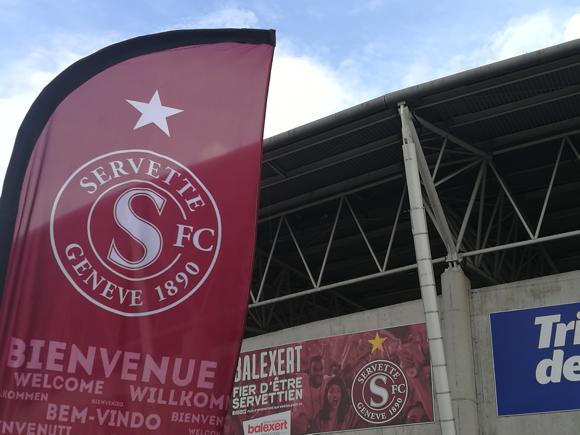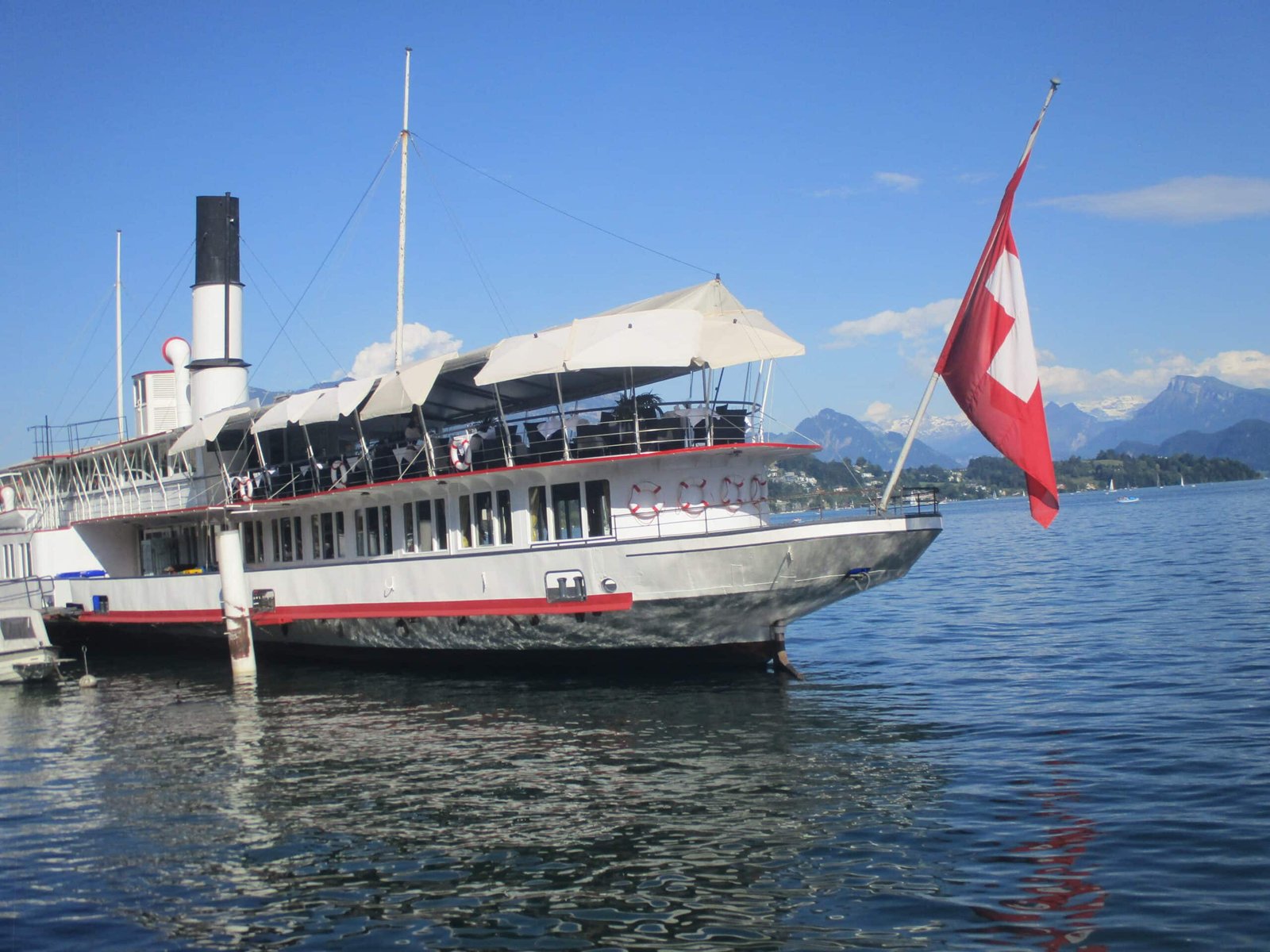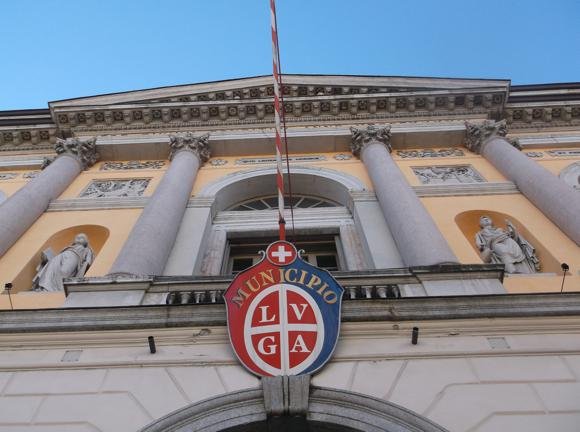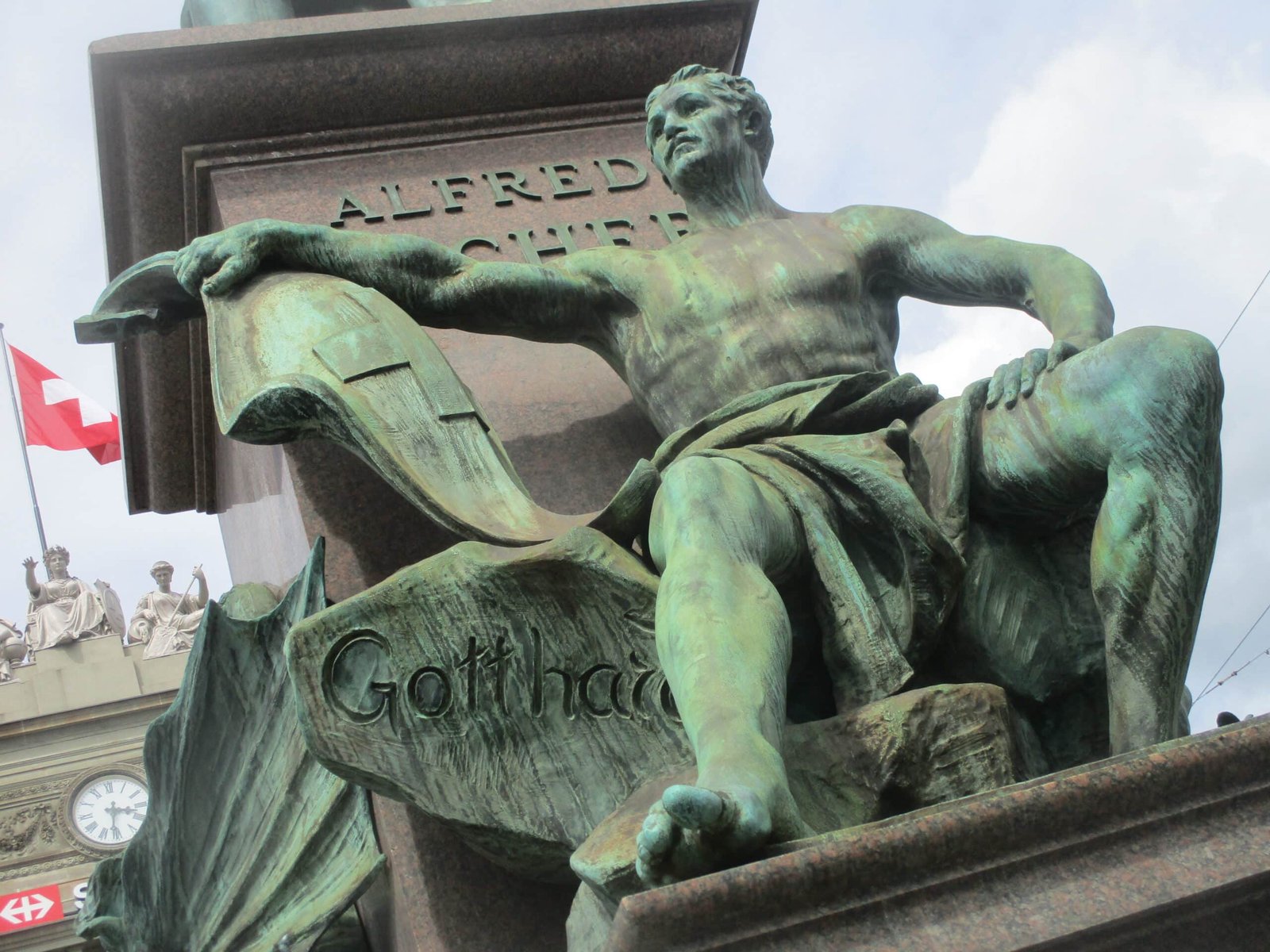Teams, tales and tips – a guide to the local game
The global city of Geneva, de facto capital of French-speaking Switzerland, is once more among the Swiss football elite thanks to Servette FC regaining entry to the Super League in 2019.
A crowd of 20,000-plus gathered at the Stade de Genève for the decisive game with local rivals Lausanne in May 2019 and similar gates are expected when les Grenats host the big boys from Basel, Berne and Zürich.
But it is 20 years since Servette last won the Swiss title, and during that time the club has suffered bankruptcy, ignominy and third-flight football. For much of the 21st century, ice hockey has been the most popular sport in town.

Given Geneva’s prestigious and picture-postcard profile, location in Central Europe and proximity to France and Italy, the Stade de Genève has acted as a showcase stage for the likes of England, Argentina, Spain and Brazil in the last few years, as well as hosting three games in the Euro 2008 finals. Meanwhile Servette struggled to stay afloat, bracketted as league equals of the reserve teams of FC Basel, Sion and FC Zürich as recently as 2016.
This, perhaps, isn’t what renowned doctor Aimé Schwob had in mind when he persuaded the board of the Foot-ball club de la Servette, formed in 1890, to adopt soccer rather than the oval-ball game they had started playing on Wendt meadow, by a main street known to this day as Servette.
By the time Schwob, a sports enthusiast of some influence, stepped in, Servette’s rugby players had already crossed the Rhône to set up at Plainpalais but would soon move back to the right bank. The club’s base for the rest of the 20th century, the Parc des Sports was in an area called Les Charmilles, close to Châtelaine cemetery.

Schwob wasn’t only a football man, although he was the driving force behind the setting up of the inaugural Swiss League in 1897. Swiss cycling, athletics and Olympic team can thank Schwob for their early development.
The newspaper he co-founded and edited, La Suisse sportive, funded that first Swiss Football League, which featured ten teams, three from Geneva: Château de Lancy, La Châtelaine Genève and Racing Club de Genève. Little is known about these clubs, nor Genève United who represented the lakeside city a year later, only that they seemed to be out of their depth when facing teams from Lausanne.
After Schwob formed the football section of Servette in 1900, becoming its first president, the club joined the league. Servette resisted the domination by teams from Zürich and Berne, where the final group matches usually took place, by winning a first title in 1907.
From then on, Servette would win the league at least once every decade right up to 1999.

In the 1920s, banker Gustave Hentsch, captain and goalkeeper of the first Servette team in 1900, bought a plot of land around the Parc des Sports, thinking it might serve his alma mater well.
Shortly after Servette’s sixth title triumph, in 1930, the Parc became the Stade des Charmilles, built to host the Coupe des Nations. A pioneer of the European Cup, set up as a counterpoint to the inaugural World Cup that was going ahead without many top sides from Europe, the Coupe des Nations was a misnomer – it actually involved clubs – but underlined the importance of organisers Servette at international level.
Servette’s reputation ensured that they were the team invited to represent Switzerland for the first European Cup of 1955-56, Di Stéfano and Gento gracing Charmilles for Real Madrid’s tournament debut.

An English-style ground in a fairly rough-and-ready industrial area, Charmilles had just hosted four games for the 1954 World Cup, including the opening fixture featuring Brazil, though Lausanne was preferred as a semi-final host.
By the time Servette were competing in the Champions League for the last time, in 1999, it obvious that Charmilles had long been surpassed as an international arena and a showcase for Geneva itself.
Gustave Hentsch had also set up a foundation whose aim was to benefit sport in Geneva. His son Léonard and grandson Bénédict duly allowed the City to make use of it, by acquiring a complex of abattoirs at La Praille, close to rail tracks south-west of town. Once cleared of buildings, the site was ideal for the new stadium the club and City had in mind.

As the Stade de Genève was being built, hotel and leisure centre were opened alongside in 2002, when Switzerland was confirmed as co-host of Euro 2008. A year later, Servette verses Young Boys, and the French Elvis, Johnny Hallyday, each filled the new arena to its 30,000 capacity within a few months.
After Charmilles was knocked down, the recreation zone that replaced it was named Parc Gustave and Léonard Hentsch.
Geneva has two more grounds worth of note. Set between contemporary La Praille and the swift, twisting river Arve, Carouge is a historically liberal community of masons, Protestants and Jews. A football team was founded here in 1904, which became Étoile Carouge, an amalgamation of FC Carouge and Étoile Sportive, in 1922.

Two years later, they beat Servette at the Parc des Sports, and soon went on to qualify for the three-team national play-off of 1928. The Stelliens were forced out of business either side of World War II, but came back to reach the Swiss Cup semi-final and the top flight for the last time in 1977-78.
Long-term home, the 5,200-capacity Stade de la Fontenette, consists of two stands, a narrow standing terrace and banks of trees. Alongside lies the Jewish Cemetery. To reach this tranquil spot on route de Veyrier, take bus 21 from the Stade de Genève five stops to Val d’Arve or bus 11 from Charmilles, via Délices and Jonction in town. A bar and superb sausage stand operate indoor and out on match days.
In June 2019, the Blues beat Tuggen in a promotional play-off to reach the third-flight 1.Liga Promotion, alongside classic names such as Bellinzona and Stade Nyonnais.

Founded in 1896 as the football section of the Eaux-Vives Sport Club, violet-coloured Urania Genève Sport are the oldest club in the city. This is slightly historic licence, as they really date back to 1922 when FC Urania fused with FC Genève. In 1929, they won their only major honour to date, the Swiss Cup, a 1-0 win over Young Boys Berne at the long-term home of UGS, Stade de Frontenex. UGS made the final again in 1932, and played four times in Switzerland’s top tier after the war.
Current league standing is Groupe 1 of the fifth-tier 2.Liga interrégional, along with Servette reserves and CS Italien, the club that has been serving Geneva’s Italian community since 1920. To find the Stade de Frontenex, built in 1920, take bus 1 or the quicker 9 from Cornavin station to Frontenex.
Getting Around
Arriving in town, local transport and timings

Geneva Airport is 4km (2.5 miles) north-west of the city. In luggage reclaim, an automatic distributor provides free bus tickets into town, valid for 80 minutes. The 5 , 5+ and 10 run to Cornavin train station, journey time around 20min. Going from town, your boarding pass is valid. If you need to catch an early flight, the A1 and A6 go from town, your boarding pass valid for the journey.
Note that certain city-centre hotels offer day passes on local transport for the duration of your stay.
Regular trains run from the rail platform below the passenger terminal to Cornavin (journey time 10mins, SF3, valid for 1hr in zone 10, practically the whole city including the Stade de Genève). For the tpg network of buses, trams and trolleybuses, any ticket in zone 10 is SF3, or SF2 for three stops, a day pass (carte journalière) SF10 (SF8 after 9am).
A taxi from the airport to town should cost around SF40. Taxis 202 (+41 22 3 202 202) charges about SF70 but that includes a name-sign pick-up and up to 40min waiting time at the airport.
Where to Drink
The best pubs and bars for football fans


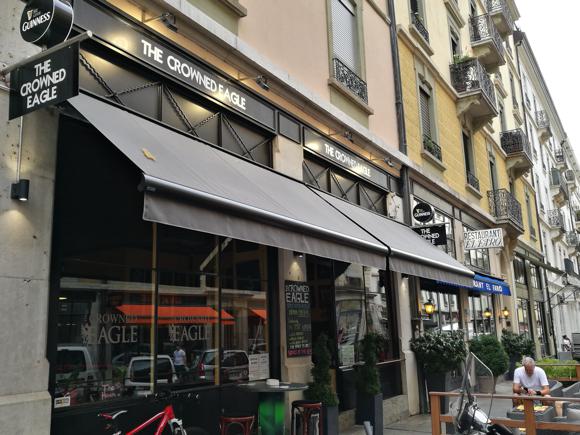


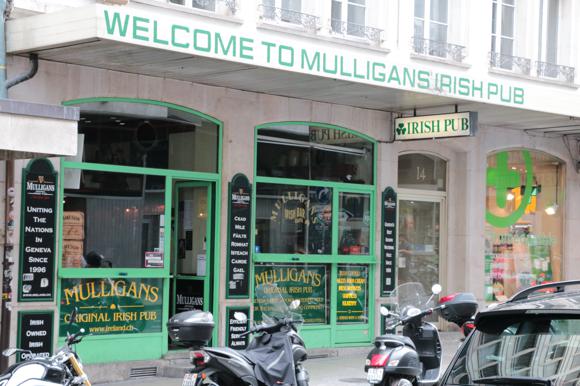
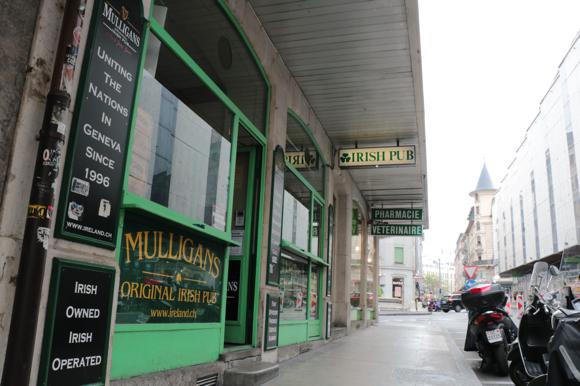

Geneva’s pubs and bars appeals to an international crowd, many showing live sport. An ideal place to start is Pâquis, the area between the train station and the lake. Between the exclusive lakeside hotels and Geneva’s red-light district, bars and restaurants are dotted around lively streets. On rue Phillippe-Plantamour, The Clubhouse puts the focus on TV sport, as does the long-established Grand Duke Pub on nearby rue du Monthoux.
Towards the station on rue du Fribourg, The Crowned Eagle was opened in 2018 and was quickly established as a friendly, football-watching local. Pool and live music, too. On place du Cornavin, the Britannia Pub has been pulling pints in the Hotel Astoria since 1972.
On the other side of main rue de Chantepoulet, Irish-owned Mulligans on rue de Grenus is another expat stalwart for Guinness and TV sport.
You’ll find the Geneva branch of Swiss faux-pub chain Mr Pickwick on rue de Lausanne, north of Pâquis.
Where to stay
The best hotels for the stadium and city centre

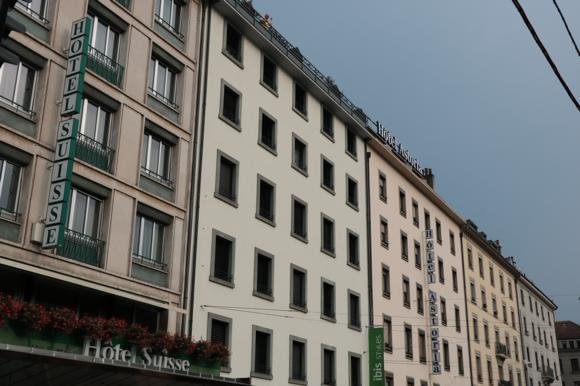
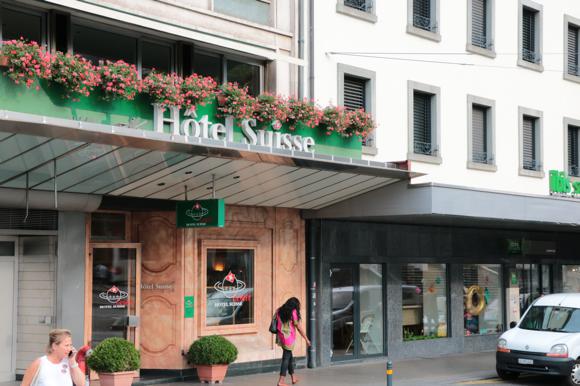

Geneva Tourism has a hotel database and click-through booking.
Serving the Stade de Genève alongside, the Ramada Encore by Wyndham Geneva is a three-star business hotel with various offers on room rates, such as the 20% discount for a two-night stay in the summer of 2019.
Convenient for the train station, three hotels line place de Cornavin near the Basilica: the standard three-star Hôtel Astoria Genève, which also houses the Britannia Pub; the economy chain ibis Styles Geneva Station Hotel and the Hôtel Suisse, whose 62 modern rooms sit behind an old-school façade.



Nearby on rue des Corps-Saints, the Hôtel St-Gervais is another old-school option, with smallish rooms and shared bathrooms.
For luxury and lakeside views, The Ritz-Carlton Hôtel de la Paix on quai du Mont-Blanc is all contemporary design and fine dining.
Further round the lake by the park of the same name, the Hôtel Mon Repos dates back to 1928, with its own bar and restaurant. It charges upper mid-range prices but offers free cycle hire.


